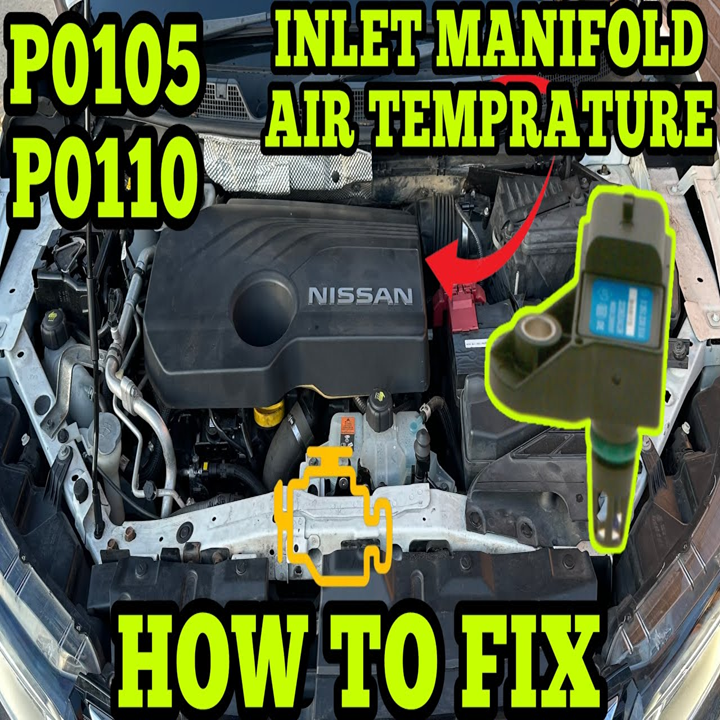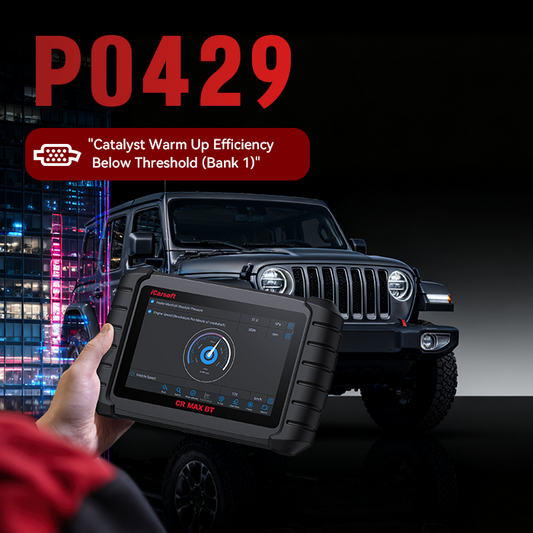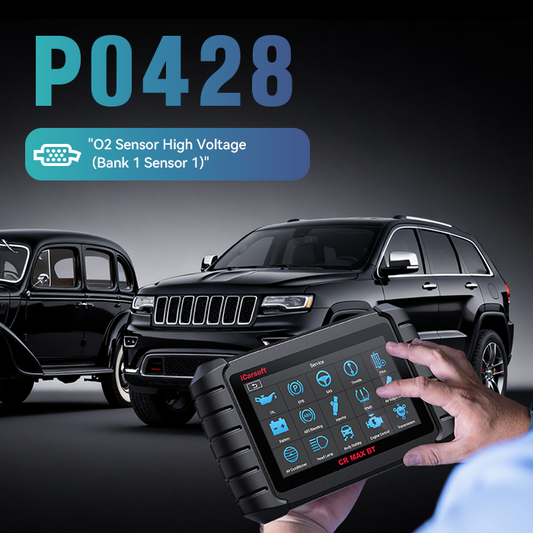If you're a Nissan owner dealing with an illuminated engine management light and fault codes P0105 (Manifold Absolute Pressure Sensor Circuit) or P0110 (Intake Air Temperature Sensor Circuit), this guide will help you locate and troubleshoot the issue. Based on a concise and informative YouTube video, we’ll walk you through identifying the sensor, checking its condition, and using a diagnostic tool like the iCarsoft CR Max BT to reset and verify the fix. This blog also includes user examples, FAQs, and SEO-optimized content for DIY mechanics and Nissan enthusiasts.

Understanding P0105 and P0110 Fault Codes
The P0105 code indicates a problem with the Manifold Absolute Pressure (MAP) sensor circuit, which measures the pressure inside the intake manifold to optimize engine performance. The P0110 code points to an issue with the Intake Air Temperature (IAT) sensor, which monitors the temperature of incoming air to adjust fuel delivery. When these sensors malfunction, your Nissan may enter limp mode, display amber or red engine management lights, and experience reduced performance.

In the YouTube video, the presenter identifies the combined MAP/IAT sensor, typically secured by a single bolt on the intake manifold. Common causes include faulty wiring, a clogged sensor, or internal engine issues. Cleaning or replacing the sensor often resolves these codes.
Step-by-Step Guide to Diagnose and Fix
-
Locate the Sensor: The MAP/IAT sensor is mounted on the intake manifold, as shown in the video at 00:28. It’s a small component with a wiring connector, secured by one bolt.
-
Inspect Wiring: Check the sensor’s wiring harness for damage, loose connections, or corrosion. Faulty wiring can trigger P0105 or P0110 without a sensor failure.
-
Clean the Sensor: Remove the sensor by unscrewing the single bolt. Clean it with an appropriate sensor-safe cleaner to remove dirt or carbon buildup, which may cause false readings.
-
Reset the Fault Codes: Use a diagnostic tool like the iCarsoft CR Max BT to clear the codes. This tool supports Nissan vehicles, reads live data, and resets engine management lights.
-
Test Drive: After cleaning and reinstalling the sensor, drive the vehicle to see if the fault codes return. If they persist, consider replacing the sensor.

Product Recommendation: The iCarsoft CR Max BT is a professional-grade diagnostic tool that supports multiple vehicle brands, including Nissan. It features Bluetooth connectivity, a user-friendly interface, and advanced diagnostics for DIY mechanics.
User Examples
-
John, Nissan Altima Owner: John noticed his 2015 Altima entered limp mode with a P0105 code. Following the video’s advice, he cleaned the MAP sensor with contact cleaner, reset the code using an iCarsoft scanner, and resolved the issue without replacement.
-
Sarah, Nissan Sentra Driver: Sarah’s 2018 Sentra displayed both P0105 and P0110 codes. After checking the wiring and finding no issues, she replaced the MAP/IAT sensor. Using the iCarsoft CR Max BT, she cleared the codes, and her car ran smoothly.
Frequently Asked Questions (FAQs)
Q: What causes P0105 and P0110 fault codes in a Nissan?
A: These codes are triggered by issues in the MAP or IAT sensor circuits, such as faulty wiring, a clogged sensor, or internal engine problems like carbon buildup.
Q: Can I drive my Nissan with P0105 or P0110 codes?
A: Driving in limp mode is possible but not recommended, as it reduces performance and fuel efficiency. Address the issue promptly to avoid further engine damage.
Q: How do I know if the sensor or wiring is the problem?
A: Inspect the wiring for damage or loose connections. If the wiring is intact, clean the sensor. Use a diagnostic tool to monitor live data and confirm the fix.
Q: Is the iCarsoft CR Max BT worth it for DIY repairs?
A: Yes, the iCarsoft CR Max BT is a versatile tool for diagnosing and resetting fault codes on Nissan and other vehicles, saving money on mechanic visits.
Q: Can a dirty air filter cause these codes?
A: A clogged air filter may indirectly affect sensor readings by altering airflow, but it’s not a direct cause. Check the filter during troubleshooting.
Q: How often should I clean or replace the MAP/IAT sensor?
A: Cleaning during routine maintenance (every 30,000 miles) can prevent issues. Replace the sensor if cleaning doesn’t resolve the codes.
Q: Will resetting the codes fix the problem permanently?
A: Resetting clears the codes but doesn’t address the root cause. Ensure the sensor and wiring are fixed before resetting.
Refference Article:
P0105 Code: How to Diagnose and Fix MAP Sensor Issues
P0110 Error Code: Causes and Fixes













